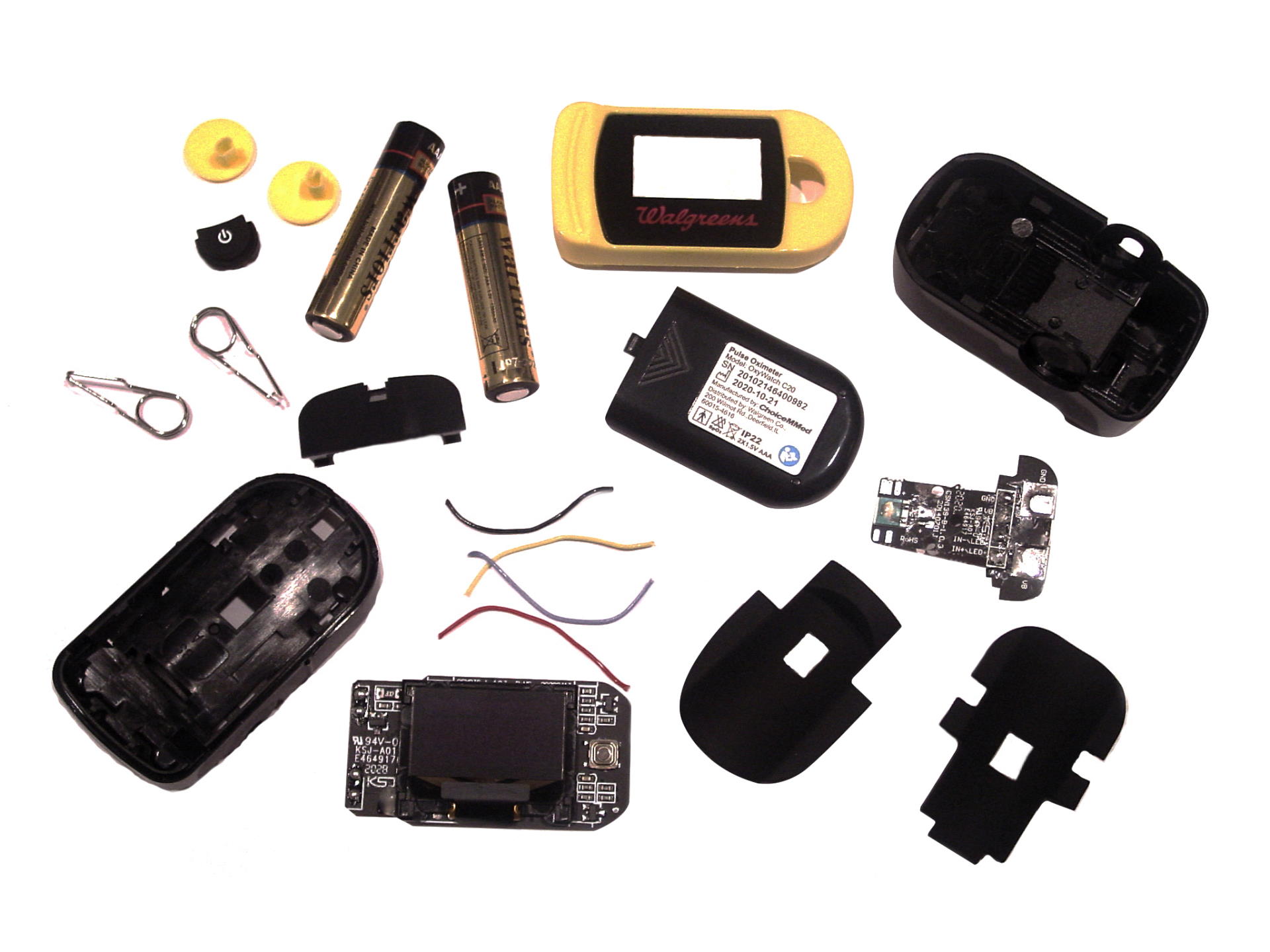Pulse Oximeter Cost Analysis
Our forensic cost analysis methods have already gained plenty of traction in the automotive industry, which has long recognized the value of determining an accurate cost of components and assemblies based on realistic labor and materials costs as well as the physics of manufacturing processes. The lessons learned from our years of automotive costing transfer easily to medical products, devices and equipment.
To highlight our capabilities with medical devices, we recently performed a teardown and cost analysis of a consumer-grade pulse oximeter. Widely used through the COVID-19 pandemic, pulse oximeters employ light beams to estimate blood oxygen saturation and pulse rate without the need to draw blood samples.
The Device
For our cost study, we focused on an off-the-shelf consumer grade pulse oximeter from Walgreens. We performed a detailed analysis of the cost of every single component that makes up the device — right down to its labels.
Unlike traditional cost analysis methods, which rely on historical cost data and estimates about manufacturing inputs, our True Cost analysis takes a forensic approach based primarily on the physics of all the manufacturing and assembly processes needed to produce the finished device. For example, we would derive the cost of molding a plastic housing component given its polymer, projected area, wall thickness and other attributes of the part. Our analysis is detailed enough to base our True Cost analysis on specific size molding machines producing the parts at a specific cycle time.
Forensic costing repeats that process for every single mechanical and electronic component in the device’s bill of materials. Our Intellicosting models also add in the full range of traditional fixed and variable cost factors. These include capital equipment amortization, maintenance, taxes, insurance, R&D and sales costs.
Our analysis broadly falls into two categories with a device such as the pulse oximeter — mechanical components and electronics.
Mechanical Components
For the mechanical analysis, we start by removing each component from the device, weighing and photographing each one. Information on each part’s material type, dimensions, country of manufacture and quantity is then captured in our proprietary costing software. The software allows our estimators to apply the forensic costing model that identifies all the manufacturing and assembly operations for each component in the device. Our models provide us with a detailed understanding of the costs associated with a wide variety of manufacturing processes — including machining, stamping, injection molding, heat treatment, plating and many other processes.
Next, we account for the capital expenses, number of operators, scrap rates, raw material usage, raw material price, indirect labor, number out at each operation, burden, SG&A and profit associated with the various mechanical components. We can optionally adjust our model for labor rates, country of manufacture by operation, capital, SG&A and profit.
Electronic Components
Our analysis for electronic components also starts with disassembly with notes on the manufacturing process and design-for-manufacturability concerns, as well as photographs to document the teardown process. We categorize all the electronic components by individual boards and circuits. And we apply cost models to each component by function — passive, discrete, active, ASIC and custom components.
Our electronics analysis includes advanced methods to understand costs. In many cases, we apply forensic delayering, x-rays and microscopic photographs to discover die area and manufacturer information. We also examine circuit board substrate materials to determine manufacturing process and material costs — including coatings, potting, flex material and more. We additionally assess design requirements including software, hardware design, mechanical design, test, validation and systems.
And like the mechanical analysis, we account for manufacturing factors such as capital requirements, labor, burden, SG&A and profit, using machine models that analyze cycle times and line layout.
Findings
After compiling the mechanical and electronics findings into our final report, we found that the pulse oximeter’s total manufacturing cost is just over $11 — not bad for a device that retails for as much as $40. Because this project is just a demonstration, not a customer project, we made a few assumptions about product volumes, location of manufacturing and assembly, labor rate and other cost factors. These assumptions are based on long experience analyzing high-volume electronic devices such as the Pulse Oximeter.
Sign up for our monthly newsletter for cost reduction tips and more teardown reports.


